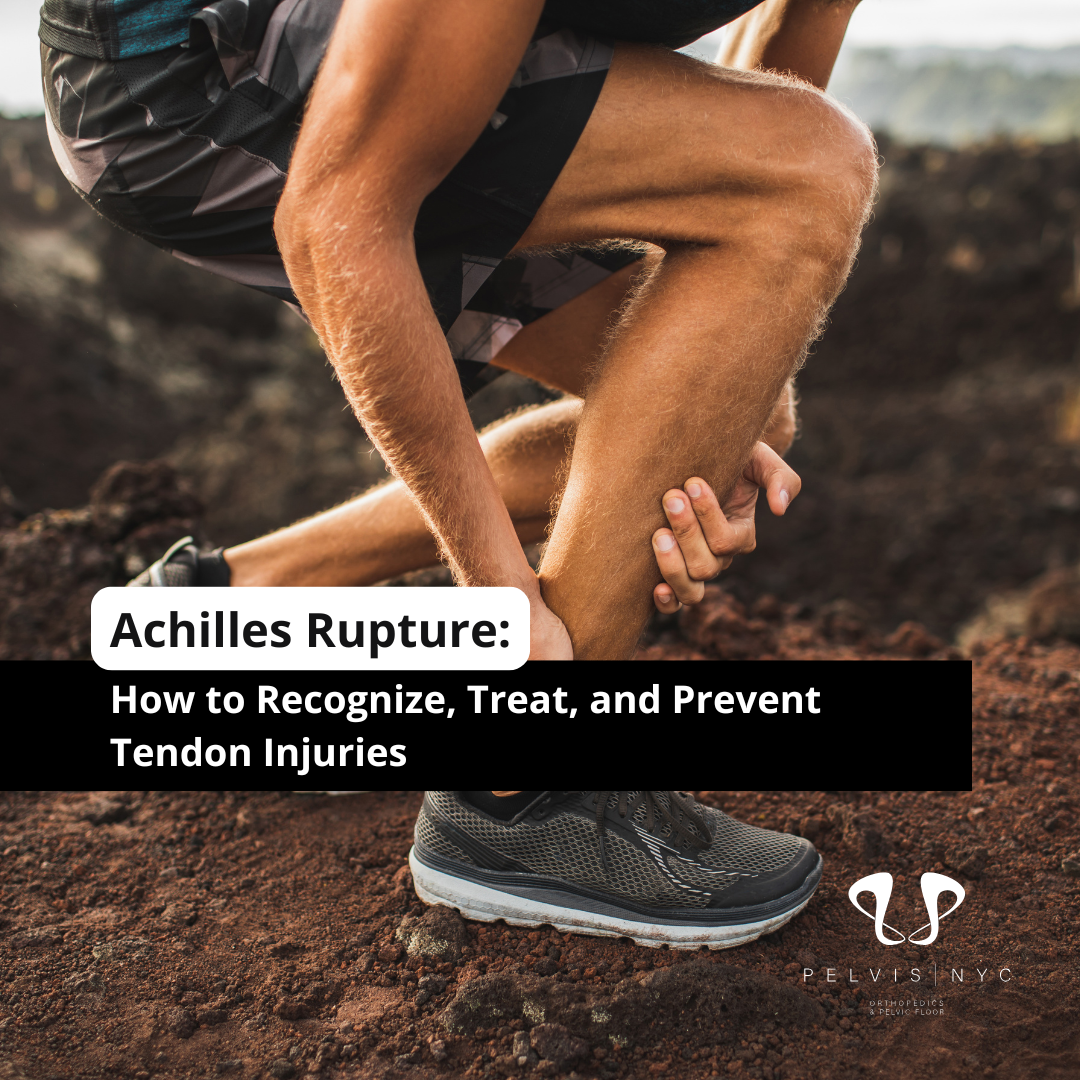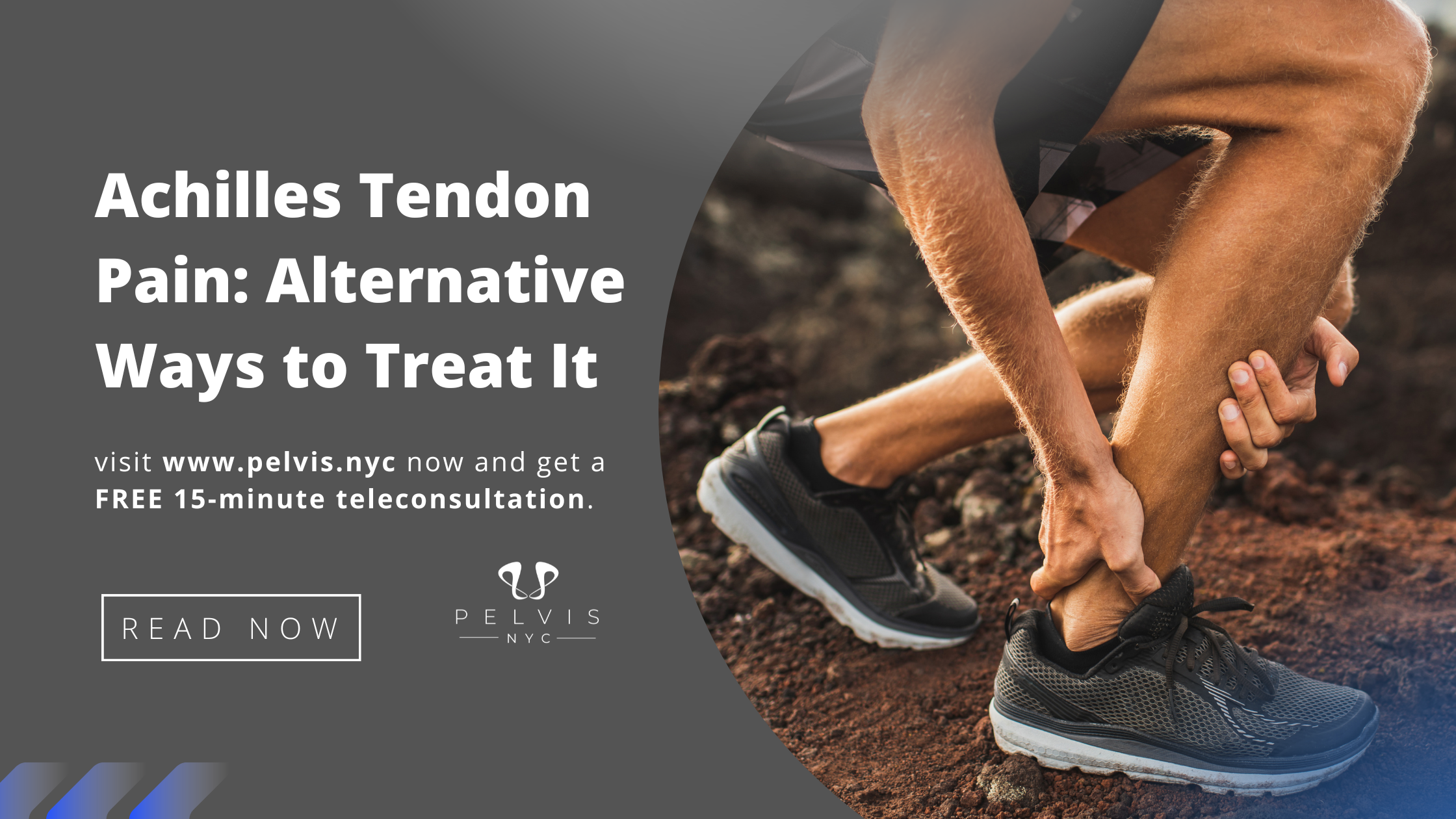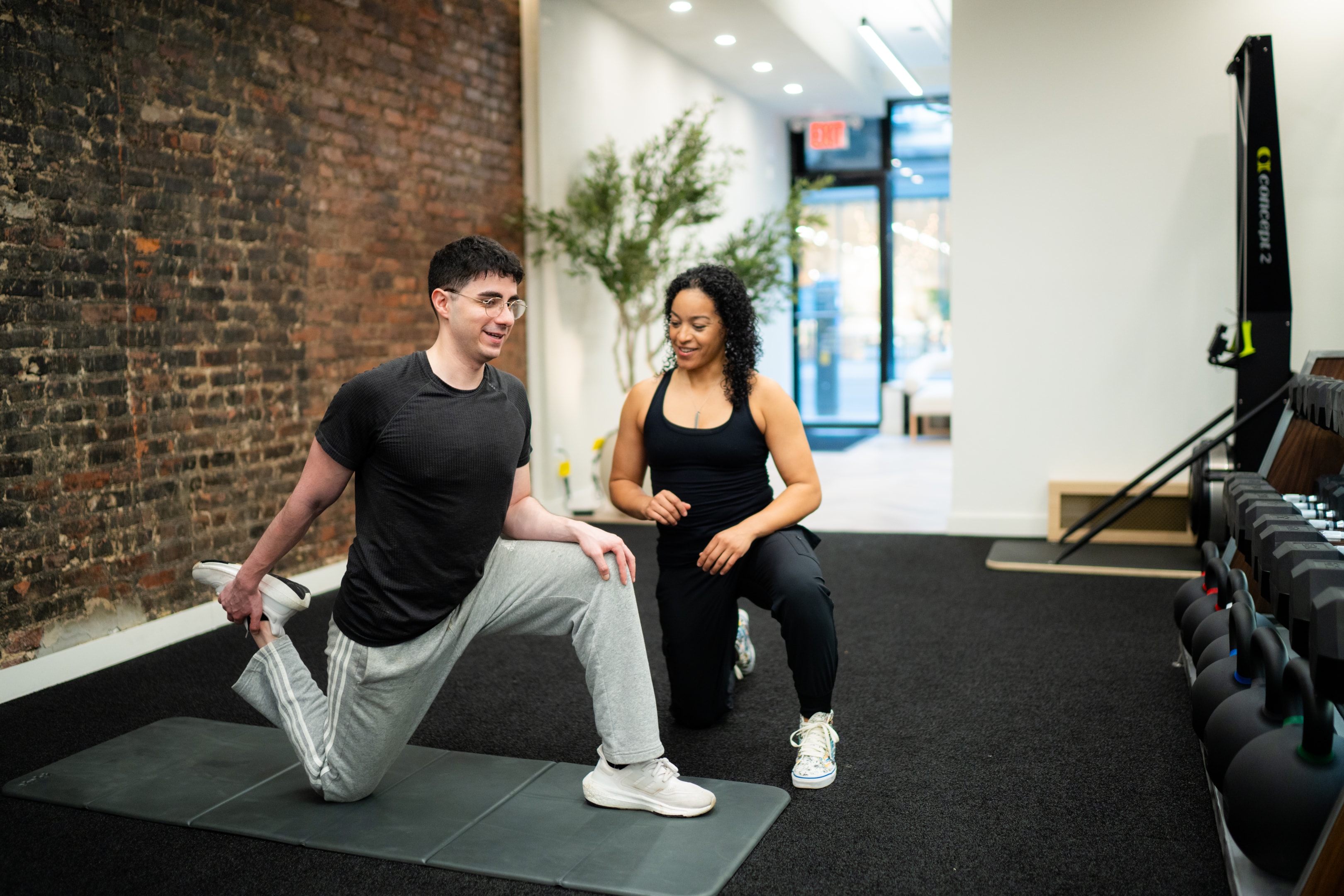If you’ve ever felt a sudden “snap” or “pop” in the back of your leg followed by sharp pain, you may have experienced an Achilles rupture. This injury can feel dramatic—almost like someone kicked you from behind—but it’s actually the Achilles tendon, the strong band of tissue that connects your calf muscles to your heel bone, giving way.
Achilles ruptures often occur due to sudden forced plantar flexion, especially during sports or vigorous activities, when the foot is rapidly pushed downward with great force.
Let’s walk through what an Achilles rupture really is, how it’s diagnosed, and what treatment and recovery can look like.
Understanding Achilles Tendons and Injuries
The Achilles tendon is the largest tendon in your body, connecting the powerful calf muscles to the heel bone. This strong, fibrous band is essential for ankle plantar flexion—the movement that lets you push off the ground when you walk, run, or jump. Because the Achilles tendon absorbs so much force during these activities, it’s especially vulnerable to injuries and ruptures. Achilles tendon injuries, including Achilles tendon ruptures, are common in sports that require sudden bursts of speed, quick changes in direction, or repetitive jumping. Understanding how the Achilles tendon works and why it’s so important can help you recognize the signs of tendon rupture and take steps to protect this vital part of your ankle and lower leg.
Types of Achilles Tendon Injuries
Achilles tendon injuries can vary widely in severity, from mild strains to complete ruptures. One common issue is Achilles tendinopathy, a condition caused by overuse or degeneration of the tendon over time. Partial tears occur when only some of the tendon fibers are damaged, leading to pain and weakness but not a total loss of function. In contrast, a complete rupture—often called a torn Achilles tendon—means the tendon has snapped entirely, usually resulting in a sudden inability to push off the foot.
Acute Achilles tendon rupture is a traumatic injury that happens suddenly, often during intense physical activity, and requires prompt medical attention. Chronic injuries, on the other hand, develop gradually due to repetitive stress or age-related changes in the tendon. Identifying whether you have a partial tear, complete rupture, or chronic Achilles tendon injury is crucial for choosing the right treatment, whether that’s nonsurgical treatment, surgical repair, or a combination of approaches to restore tendon health and function.
What Is an Achilles Tendon Rupture?
An Achilles tendon rupture occurs when the tendon is ruptured, meaning it has been completely torn. The severity can range from a small Achilles tendon tear that makes walking painful to a full rupture that may prevent you from pushing off your foot altogether.
How Do Achilles Ruptures Happen?
Achilles ruptures are often linked to sports that involve quick stops, starts, or jumps, like basketball, tennis, or soccer. But they can also happen during everyday activities—running up the stairs, missing a step, or even slipping on the sidewalk.
Some common risk factors include:
- Tight calf muscles or poor flexibility
- Skipping warm-ups before exercise
- Taking certain medications that weaken tendons
- Patient age (most common in adults 30–50)
- Use of fluoroquinolone antibiotics
Certain medications and systemic diseases can weaken the tissue around the Achilles tendon, increasing the risk of rupture.
Understanding these risks can help you prevent an Achilles tendon rupture before it occurs.
Diagnosis: Medical History, Physical Examination, and Imaging Tests
Doctors start with a physical exam and by gathering your medical history—what you felt, when it happened, and any previous ankle or calf issues.
A physical examination often includes the Thompson test, where your calf is squeezed to check if your foot moves. The test is performed with the patient in the prone position, lying face down with the knee flexed. If the foot doesn’t move, it suggests a rupture.
For clarity, imaging tests such as ultrasound or magnetic resonance imaging (MRI) may be ordered. These confirm whether it’s a partial or complete Achilles tear and help guide the treatment plan. Imaging can also help rule out other injuries, such as fractures, that may occur alongside an Achilles rupture.
Achilles Tendon Rupture Treatment Options
Treatment for a ruptured Achilles tendon depends on the severity of the rupture, your activity level, and your goals. Options generally include:
- Nonoperative treatment is a conservative approach and an alternative to surgery.
- Operative management, also referred to as surgical intervention, involves repairing the tendon through surgery.
Surgical intervention may offer a reduced risk of re-rupture for some patients compared to nonoperative treatment.
Nonsurgical Treatment
- Conservative methods typically involve immobilization with a walking boot or functional bracing, which are alternatives to casting or splinting, to allow the tendon to heal naturally while protecting the injured leg.
- Protocols may include non-weight-bearing initially, followed by gradual weight bearing and early weight bearing as tolerated, to speed recovery and improve ankle function.
- Gradual stretching and strengthening
- Physical therapy to restore function
This approach is often recommended for partial tears or patients who are less physically active. Conservative methods focus on minimizing strain on the injured leg and promoting safe, progressive rehabilitation.
Achilles Tendon Repair (Surgical Treatment)
- Surgery reconnects the torn tendon.
- There is a risk of nerve injury, especially with minimally invasive or percutaneous techniques.
- Wound complications, such as infection or delayed healing, can occur after surgery.
- Adequate blood supply is important for optimal tendon healing and recovery.
- Typically followed by a period of immobilization.
- Rehabilitation with physical therapy afterward.
- Sports medicine specialists often manage surgical intervention and rehabilitation, particularly for athletes aiming to return to high-level activity.
This option is often chosen by younger or more athletic patients who want to return to high-level activity.
The Role of Physical Therapy in Recovery
No matter which treatment path you take, physical therapy is essential. Recovery from an Achilles rupture or Achilles tendon tears involves a process known as functional rehabilitation, which is aimed at restoring function, strength, balance, and mobility so you can return to your daily life and favorite activities.
A physical therapist can help you:
- Rebuild calf and ankle strength
- Improve flexibility and range of motion
- Correct imbalances that could lead to future injuries
- Progress safely from walking to running or sports
Studies have shown a significant difference in outcomes for patients who undergo structured functional rehabilitation protocols compared to those who do not, with better recovery and lower re-injury rates.
Without therapy, recovery can be slower, and the risk of re-injury is higher. With it, you’re giving your body the tools to heal and thrive.
Prevention and Reducing Your Risk
While it’s impossible to eliminate the risk of Achilles tendon rupture entirely, there are several effective ways to reduce your chances of injury. Regularly stretching and strengthening your calf muscles can help support the Achilles tendon. It can improve flexibility in your foot and ankle. Gradually increasing the intensity and duration of your physical activities, rather than making sudden changes, can also protect the tendon from overload. Wearing supportive footwear that fits well and is appropriate for your sport or activity is another key preventive step. Pay attention to any early signs of Achilles tendon pain or discomfort, and don’t ignore a persistent ache. An early intervention can prevent more serious injuries.
It’s also important to avoid steroid injections and certain antibiotics, such as fluoroquinolones, which have been linked to an increased risk of tendon rupture. If you do experience an Achilles tendon injury, seeking proper treatment—including physical therapy exercises and, when needed, minimally invasive surgery—can help the tendon heal properly and lower the risk of re-rupture. By taking these precautions, you can keep your Achilles tendon strong and reduce the likelihood of long-term problems.
Ready to Begin Your Recovery?
An Achilles rupture may feel like a major setback, but it doesn’t have to be the end of your active lifestyle. With the right treatment and guidance, you can come back stronger.
At Pelvis NYC, we specialize in personalized physical therapy programs. It will support your recovery journey—from early healing to full return to movement.
Don’t let an Achilles rupture keep you sidelined. Contact Pelvis NYC today and take the first step toward your recovery.
Related Blog: Why Your Ankle Pain Persists (and What You Can Do About It)



